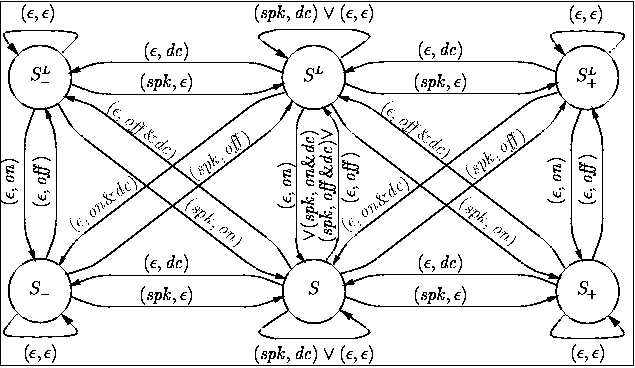The goal of the idle speed control is to keep the crankshaft
revolution speed within a prescribed range around a reference value,
in spite of any possible disturbance torque.
As a test case, the
open-loop behavior of a 4-cylinder in-line engine in idle regime,
modeled as a hybrid system, has been simulated under different working
conditions.
The hybrid model captures the interactions between the
torque generation mechanism, represented as a discrete event system,
the engine phases' cycle and the clutch engagement/disengagement,
rendered through a finite state machine, and the power-train's and
intake manifold's dynamics, both described by continuous-time
systems.
In the first version of the case study, two linear
hybrid models of a 4-cylinder engine in idle regime have been
described and simulated under the action of a disturbance torque; the
latter model captures the state of the clutch, while the former
does not. The test case models are implemented by two Simulink
schemes, integrated with Stateflow charts.
The following files are available:
 The
second version of the Idle Speed Control Test Case is now
available. The model has been refined by taking into account
nonlinearities in the intake manifold and by modeling more precisely
both the torque generation mechanism and the effect of clutch
switching on the power-train dynamics. Furthermore, in order to
provide a certain degree of scalability to the test case, a number of
hybrid engine models at increasing levels of complexity have been
illustrated, starting from a very abstract one and ending with the
complex nonlinear hybrid model. Finally, simulation results of the
proposed models are presented to highlight the peculiarities of each
hybrid description of the engine with respect to the others.
The
second version of the Idle Speed Control Test Case is now
available. The model has been refined by taking into account
nonlinearities in the intake manifold and by modeling more precisely
both the torque generation mechanism and the effect of clutch
switching on the power-train dynamics. Furthermore, in order to
provide a certain degree of scalability to the test case, a number of
hybrid engine models at increasing levels of complexity have been
illustrated, starting from a very abstract one and ending with the
complex nonlinear hybrid model. Finally, simulation results of the
proposed models are presented to highlight the peculiarities of each
hybrid description of the engine with respect to the others.
The new technical report and the Matlab/Simulink sources can be found
respectively at:
Matlab R12 (version 6.0.0.88, Stateflow version 4.0.2) for Windows has
been used for designing and simulating all the models provided.


The second version of the Idle Speed Control Test Case is now available. The model has been refined by taking into account nonlinearities in the intake manifold and by modeling more precisely both the torque generation mechanism and the effect of clutch switching on the power-train dynamics. Furthermore, in order to provide a certain degree of scalability to the test case, a number of hybrid engine models at increasing levels of complexity have been illustrated, starting from a very abstract one and ending with the complex nonlinear hybrid model. Finally, simulation results of the proposed models are presented to highlight the peculiarities of each hybrid description of the engine with respect to the others.